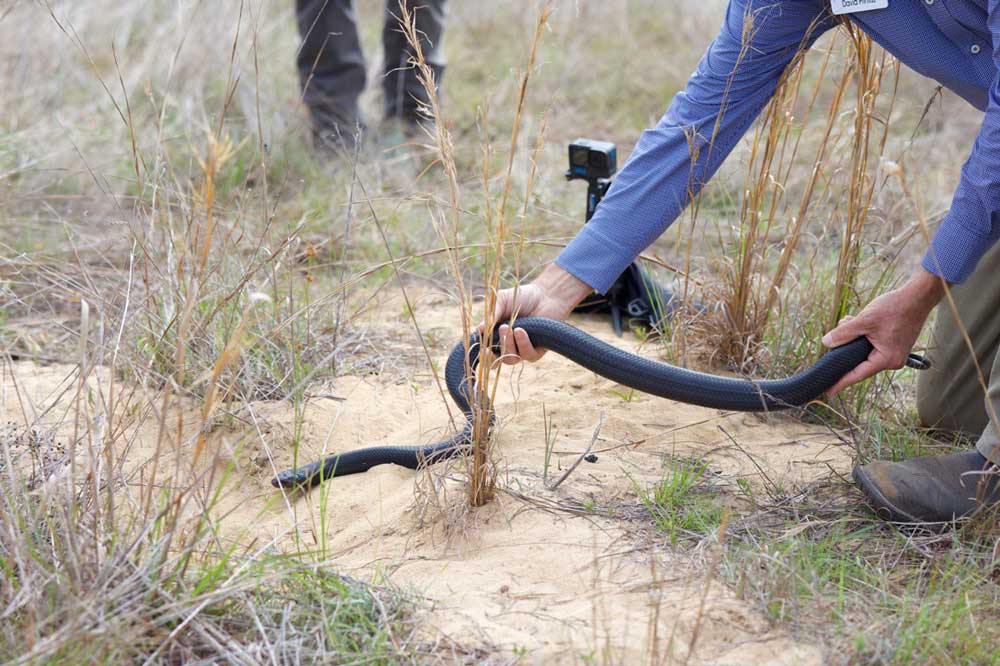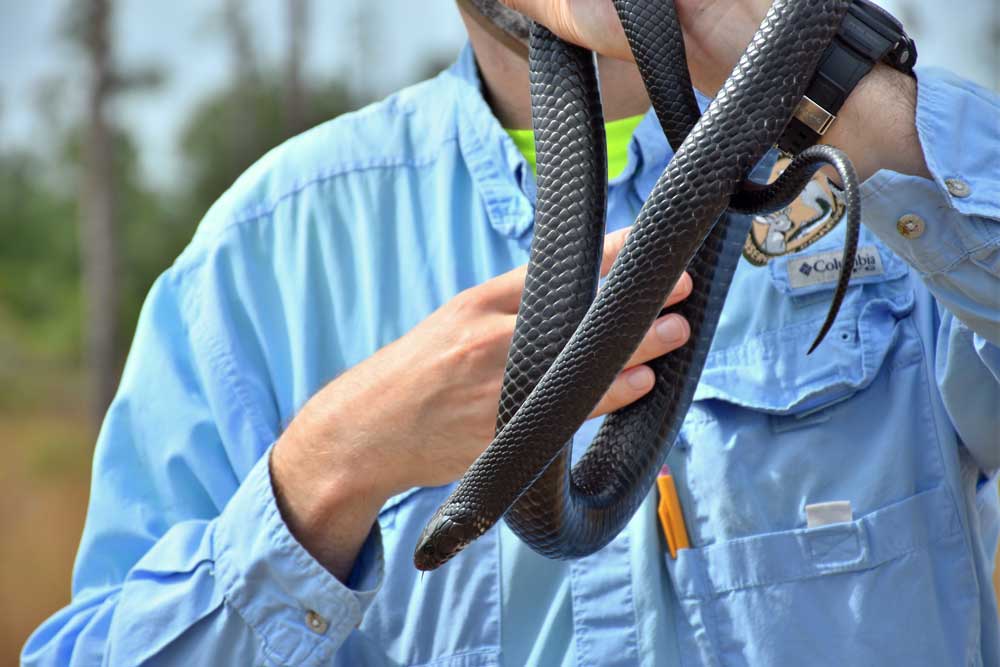Indigo Snake Watch, the project is aimed to improve the understanding into how reintroduced snakes in the wild move about in their new surroundings.
The Florida Fish and Wildlife Conservation Commission, The Nature Conservancy in Florida and the Central Florida Zoo’s Orianne Center for Indigo Conservation (OCIC) is looking for people to volunteer and identify digital images of Eastern indigo snakes (Drymarchon couperi) from a database of images. These images are captured on trails in which the Eastern indigo is known to inhabit.
Indigo Snake Watch
Named Indigo Snake Watch, the project is aimed to improve the understanding into how reintroduced snakes in the wild move about in their new surroundings. It also will help scientists understand the activities that they may partake. The program is brand new and is called a participatory science project. Volunteers are essential to ensure its success. It is based in northwest Florida and is hosted on the Zooinverse platform.
The program is entirely volunteer and folks can help to classify as many or as few photos they’d like. Indigo Snake Watch is currently placing trail cameras inside the Apalachicola Bluffs and Ravines Preserve. When the cameras capture the photos, the images are uploaded to the Indigo Snake Watch Zooniverse project. Volunteers will be able to login into the project and help classify photos.

Eastern indigo snake released into gopher tortoise burrow. Photo credit: FWC
“Everyone can help in the efforts to re-establish Eastern indigo snake populations,” said Preserve Manager Catherine Ricketts. “Staff at the Preserve, which is part of TNC’s Center for Conservation Initiatives, are proud to have played a part in restoring this land, and now – after eight years of releasing the snakes at ABRP – we welcome the public to help track and monitor the snakes’ continued recovery.”
41 Eastern Indigo Snakes Released Into Florida’s Apalachicola Bluffs and Ravines Preserve
Researchers will then use consensus analysis on the classified photographs to determine the most accurate understanding of Eastern indigo snake activity in the preserve. This will give scientists a better understanding of the reintroduced snakes. Once this data is collected, it will be sent to FWC, Nature Conservancy, and OCIC biologists to help adjust conservation and reintroduction efforts if necessary. Information and updates to the project will be available on the project’s Zooniverse Results page.
For more information, visit Zooniverse.org/Projects/FWC/Indigo-Snake-Watch
Eastern Indigo Snake Information
The Eastern indigo snake is the longest native snake in the United States. It is known to sometimes reach more than 8 feet in length. The snake is a federally threatened species and certain restrictions are in place with regard to possessing them. A member of the Colubridae family, indigo snakes feed on a variety of animals. These include small mammals, amphibians, birds, lizards, baby turtles, and other snakes, including every species of venomous snake found in Florida.
The snake was historically found in southern Georgia, Alabama, eastern Mississippi and throughout much of Florida, but was largely extirpated from the ABRP due to habitat loss and fragmentation. The last sighting of an Eastern indigo in the ABRP occurred in 1982. The Apalachicola Bluffs and Ravines Preserve is the only area designated by the state for the introduction of the indigo snake. In 2022, a wild-hatched Eastern indigo snake was found in Alabama’s Conecuh National Forest. This marks the second time in 60 years that a wild specimen was observed in the wild.



